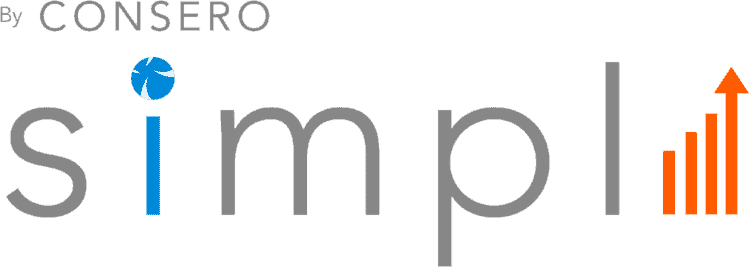Many businesses focus their attention on getting as many new customers as possible to make sales. However, loyal customers are, in fact, the foundation of any booming business. For a business, faithful clients translate into repeat purchases and a host of other benefits. They’re also the most likely to promote your brand on social media as well as to friends and family. They also tend to report the highest levels of customer satisfaction, lowest levels of churn rate and can help boost the company’s net promoter score.
A customer retention program is a critical component in the success of any business. Yet, brands interested in creating a customer loyalty program or getting a deeper understanding of what makes their customers happy need to know how to measure the customer retention rate and customer churn rate. These two metrics often go together and help companies better understand the effectiveness of their customer service and subsequent customer satisfaction.
The customer churn rate indicates the speed at which clients stop doing business with a company. The rate is determined as a percentage of customers that currently exist and represents the percentage of customers who leave over time. While frequently looked at as a negative metric, the churn rate is a powerful tool for businesses looking to understand what’s working as it should, what isn’t, and what needs to be improved when it comes to the onboarding process and customer journey. The client churn rate can also help with marketing, social media, and various customer service programs. Similarly, the customer retention rate offers excellent insight into how to optimize a customer loyalty program and manage a healthy customer experience.
What Is The Customer Retention Rate?
The customer retention rate measures the number of customers that an organization continues to do business with over a set period. This customer retention metric is expressed as a percentage of a company’s current customer base that has remained loyal during that time frame. Retention is the opposite of churn rate and is critical to understanding the lifetime customer value. It’s also used in quantifying the efficacy of the brand’s marketing initiatives, customer service KPIs, and the overall customer retention plan.
The reason why all of these metrics above are so important because it’s far less expensive to retain your current customers than it is to only focus on customer acquisitions, month after month.
How to Calculate Customer Retention Rate?
To determine the retention rate, companies need to have a predetermined period of time they want to measure. Once it has that, they need to get the following data:
- S = The number of original customers at the start of the period
- E = The total number of customers at the end of the period
- N = The total number of new customer added during the time frame
This data helps measure customer retention and get a precise measure of customer loyalty and churn. Some companies will evaluate this data on a weekly, monthly, quarterly, or annual basis.
Customer Retention Rate Formula
Businesses need to use the following formula to calculate the actual customer retention rate:
[(E – N) / S] * 100 = X
So, for example, if your company starts with 200 initial customers (S), added 30 new customers over the period (N), lost 20 customers, and ended up with 210 customers at the end of the time period (E), you will have a customer retention rate of 90%.
Basically, [(210-30)/200]*100 = 90%.
The ideal rate is 100%, which means that you didn’t lose a single client. However, that’s not a realistic benchmark in most situations. The aim is to be over 85% for your company to remain strong and scalable. While it may still seem high, an 85% retention rate is average, as far as small businesses are concerned.
How To Improve Your Customer Retention Rate
Those looking to improve their customer retention efforts, slow down their user churn rate, and reduce their customer acquisition costs will need to get a handle on their retention rates. To do so, business owners will need to follow these steps:
- Setting realistic expectations – One of the major factors that improve retention rates is the correlation between their expectation and actual customer experience. If you make promises that you are unable to keep, you’re unlikely to see repeat purchases.
- Implementing anticipatory services – By sending your customers reminders for upcoming invoices or subscription renewals, it shows that you’re on top of things.
- Leveraging social media – Interacting one-on-one with every client on social media or email will help build healthy customer relationships, loyalty, and retention.
- Solicit feedback from customers – Customer feedback surveys are a great way of gauging customer experience. If multiple prospective clients mention company issues or shortcomings, addressing the problems can significantly boost customer retention rates.
The Customer Churn Rate
As mentioned earlier, the customer churn rate (CCR) represents the ratio between acquired customers and lost soon afterward. The churn and retention rates are like two sides of the same coin. The churn represents clients lost, while retention represents clients retained. A low CCR is indicative of happy customers and increased levels of loyalty.
One way of calculating the user churn rate is by subtracting your retention rate from 100 percent. Alternatively, the CCR can be determined by dividing the customer loss by the number of the original customers at the start of a given time period. You then multiply that value by 100.
The Customer Lifetime Value
As far as retention metrics go, the customer lifetime value (CLV) is among the most important but also among the most confusing to calculate. The CLV indicates the health of your business in terms of how much customers end up spending during their lifecycle. When customer loyalty is high, they tend to spend more, yielding a greater lifetime value.
To calculate the CLV, you need to multiply the amount of money the average customer spends per year by the average customer lifespan. This will give you a value in terms of how much revenue you should expect from the average customer over their lifecycle.
The Repeat Customer Rate
Loyal customers are the ones making multiple purchases. As such, the repeat customer rate would be a great measure of customer loyalty. The repeat customer rate is a percentage of the current customer base that has made more than the initial purchase. To calculate it, you divide the number of repeat clients over a period of time by the total number of clients and multiply by 100. While repeat purchase doesn’t automatically indicate loyalty, the likelihood that a customer becomes loyal grows with every additional purchase.
The Upselling Ratio
The most faithful clients are also the most receptive to your products, aside from those that they already intend to buy. For example, suppose a customer is browsing for a specific item and ends up buying that item alongside another item from a different product category. In that case, there’s a strong indication that the customer is loyal to your brand.
The upselling ratio is about measuring the percentage of clients who added unrelated products to their orders instead of those who bought a single product. The formula is the number of clients who made multi-item purchases divided by the number of clients who made single-item purchases.
The Product Return Rate
Many eCommerce businesses use the product return rate as an indicator for the quality of products and the customer service they have to offer. If the product generates customer success, the product return rate is low, which indicates that the product quality is high.
Time Between Purchase
This purchase frequency KPI can determine how much demand there is for their product in relation to their repeat customers. It also indicates how much value they provide as well as how good your customer service is.
Shopping Cart Abandonment Rate
This metric indicates a point of friction when customers have already said yes, they are willing to make a purchase, but for some reason, they can’t or won’t. For instance, a confirmation screen isn’t loading, their transaction isn’t completing, there aren’t enough payment options, and other customer experience issues.
Takeaway
Building and maintaining a robust customer retention strategy will require a fair degree of planning. When it comes to improving your customer retention rates and developing the right programs and strategies to make it happen, organizations need to focus on detailed business analysis to understand which metrics to follow and how to calculate them. Consero offers a financial solution, intuitive systems, and the expert support necessary to help you better understand your company from every angle. Request your free demo today!









